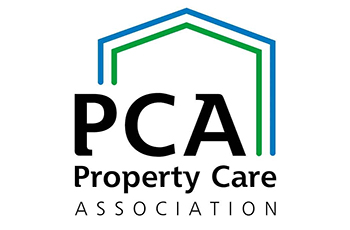premier preservations
Dry Rot
A family business established in 1990 fully quailfied surveyors and technicians. We pride ourselves on fast, efficient and reliable service. Members of the PCA and Trustmark approved contractor
What is Dry Rot?
Dry rot (Serpula Lacrymans) is a wood destroying fungus considered to be the most serious form of timber decay. This form of decay can spread very rapidly, therefore it is essential that early diagnosis and treatments are started at the very earliest stage.
What causes Dry Rot?
Dry rot occurs where the timber is damp and the affecting damp has a moisture content that is in excess of 20%. This moisture can be present as a result of the following forms of dampness:
- Penetrating Damp– Caused by external defects such as defective rainwater goods or a leaking roof.
- Rising Damp – Caused by a possible ineffective damp proof course – for example where the damp proof course has been bridged.
- Condensation – Lack of sufficient ventilation in a property can lead to damp, moist air been trapped in the property leading to condensation problems.
The other vital ingredient to cause a dry rot outbreak is dry rot spores which surround us every day but are unseen to the human eye.
Identification of Dry Rot
Serpula Lacrymans
The name is something of a misnomer insofar that dampness in the timber is very often the cause of an attack by this highly destructive fungus. The word ‘dry’ refers more to the cracked and dry appearance of the affected timber, whereas the Latin word ‘Lacrymans’ refers to the weeping appearance of the moisture-exuding fruiting bodies. These fruiting bodies (sporophores) ripen to give off literally millions of spores which may be recognised as a rust coloured dust. The spores are airborne and can be found almost everywhere in this country. The spores which may have come to rest can lie dormant for years until a set of conditions arises which triggers off germination, and initially, growth by cell-division. The initial growth is white and fluffy, almost like cotton wool, and in this state it is referred to as mycelium. This develops into the sporophores, which may be coloured red-brown, violet and yellow, and, as mentioned already, produce the spores for future propagation.
The most common symptom of dry rot, even without physically seeing the outbreak, are the presence of a damp, musty and fungal smell. The smell may not necessarily mean there is a dry rot issue, but would certainly indicate an issue with dampness; however dampness can often lead to dry rot depending on the extent of the issue.
There is, however, a further aspect which contributes to the spread of this fungus. It can develop moisture-seeking ‘strands’ which are capable of penetrating masonry. These strands are resistant to alkaline conditions and can grow through lime mortar in their search for a new ‘food’ source.
All this serves to emphasise the extreme importance of recognising an attack of dry rot fungus in its early stages. There is no point in ignoring it and hoping that it will go away, because the longer it is allowed to survive, the more exhaustive and costly eradication will become.
Finally, the strands are capable of lying dormant for years before, themselves, or even small sections of them, being triggered back into life, start a fresh outbreak of the fungal growth.
Treatment of Dry Rot
The eradication of this form of decay must be a job for experts and must be very thoroughly carried out, being increasingly more costly the longer it is delayed. Where ‘strands’ have developed, these must be completely traced and sterilised by selected irrigation of the area with a powerful fungicide. All affected timber and any discarded material in sub-floor voids should be removed from the premises and burned. Plaster affected by strands or otherwise contaminated should also be removed from the building and carefully disposed of. Timbers in the area of an attack must be treated with the appropriate fungicidal preparation.
Most importantly, any sources of dampness in the structure of the building must be located and appropriate action taken to remove this source of trouble.
One of the conditions which will encourage the growth of dry rot and fungus is damp air, so that the provision of efficient ventilation in the sub-floor and cellar areas is an essential requirement in the eradication process.
Wet Rot
What is Wet Rot?
The main sorts of fungal decay can be divided into two types, the so-called Wet Rots of which Cellar Fungus (Coniophora Puteana) is the most widespread and True Dry Rot (Serpula Lacrymans)
As the name implies, this type of fungus (which can develop in complete darkness) attacks timber which is in a permanently very damp or wet state.
What causes Wet Rot?
Commonly found in timbers that have become damp, wet rot cannot begin attacking wood unless there is a moisture content of at least 20% and, as a result, does not normally occur in internal timbers unless there is a significant dampness issue. This is usually as a result of timbers coming into contact with damp masonry.
Signs of a Wet Rot Problem
Wet rot in timber can cause issues with the structure of a property making it essential that you identify signs of wet rot before further damage is done. If you notice the following you may have a wet rot problem:
- Flexing or ‘springy’ floors
- Distortion, discolouration, softness and cracking
- Loss of strength to the timber
- Visible fungal growth – this may sometimes occur
- Smell – there may be a damp musty smell
Treatment of Wet Rot
Usual practice is to remove all rotted wood and replace with new protected timber or other materials such as concrete beams or steel. Wet rot decay is usually limited to the areas where the wood has become wet. There are however, occasions where timbers can be retained such as large support beams, roof trusses etc. These may be able to be treated or supported using other means. It is also essential to locate and eliminate the source(s) of moisture which has caused the wet rot decay. Dealing with the source of moisture will reduce the risk of further outbreaks of the wet rot decay.
Need some friendly help & advice
Call the Team – 01274 616311
Request Survey![]()
Survey Request Form
Our Details
If you would like to contact us regarding any of our services please fill in the contact form provided. We will try our best to reply within one hour.
Alternatively you may wish to speak to us direct on:

Premier preservations Ltd is a limited company registered in England and Wales.
Company registration No. 03920596















